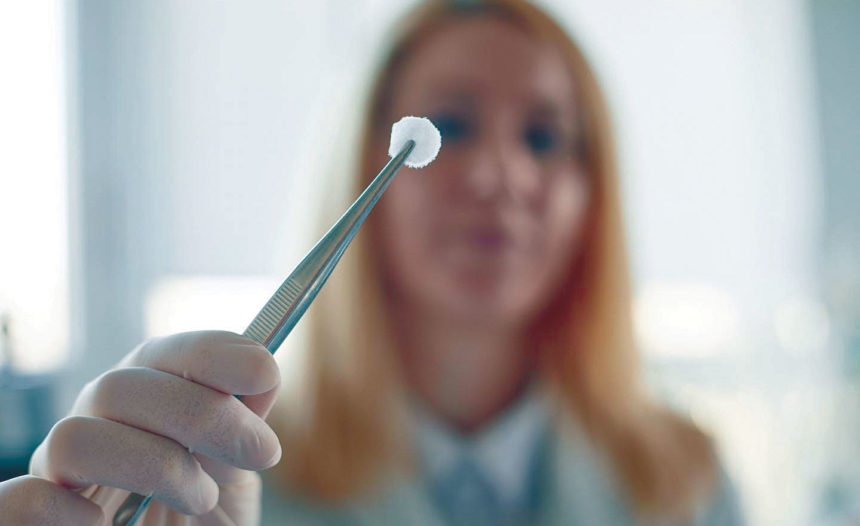
Hyaluronic acid has been used to fill in wrinkles since the early 2000s, but Lithuanian researchers are exploring whether its power might be more than skin deep.
A team at Kaunas University of Technology is developing a sponge-like wound dressing with hyaluronic acid, a natural polymer that stimulates tissue regeneration and is already used for cosmetic, ophthalmological and bone-regeneration purposes.
The hope is that hyaluronic acid’s anti-inflammatory properties combined with the structure of a new dressing could help stimulate tissue regeneration too.
“We are used to commercial hyaluronic acid-based products, which usually are thick liquids or gels,” said Odeta Baniukaitiene, researcher and chemical technology faculty member at Kaunas. “Although quickly absorbed by the organism, in this form the polymer doesn’t have the structure needed for tissue building.”
Her team has used a freeze-drying technique to render hyaluronic acid into a sponge-like structure, which then fills in a deep wound. It provides a structure for new cells to “stick” to, allowing active compounds with antimicrobial, antioxidant, anti-inflammatory or tissue regeneration stimulating qualities to carry through the wound.
The scientists are currently testing the prototype in vitro with different cells in collaboration with the Lithuanian University of Health Sciences.
From the March 1, 2019 Issue of McKnight's Long-Term Care News



